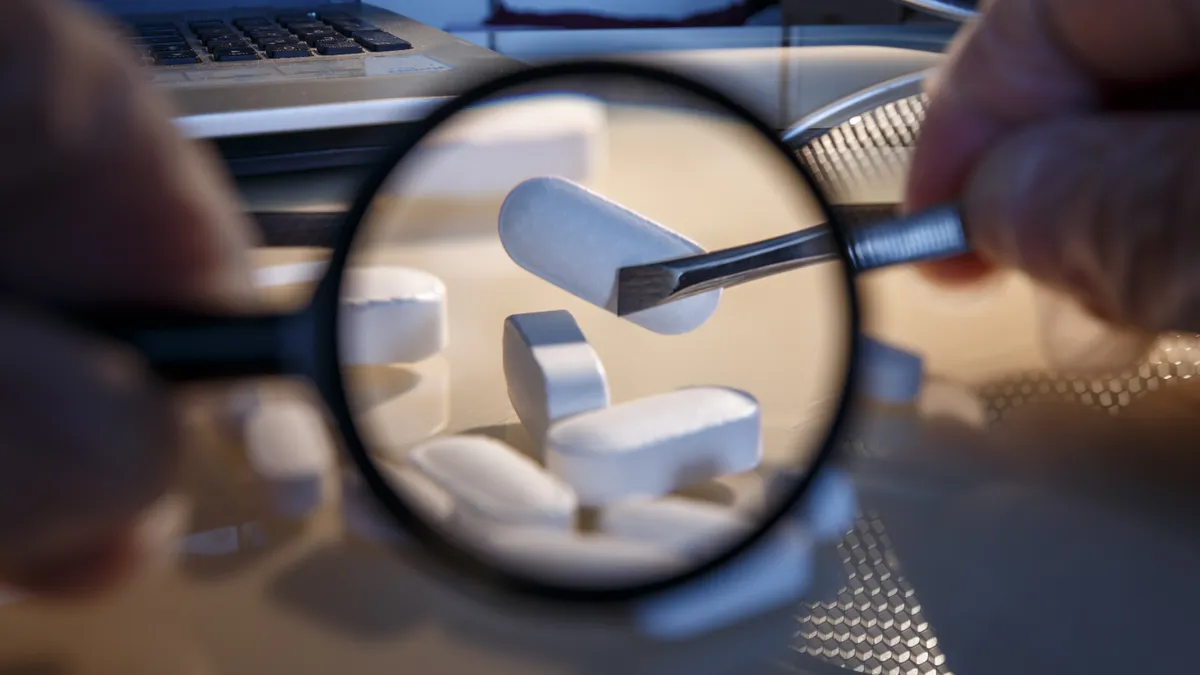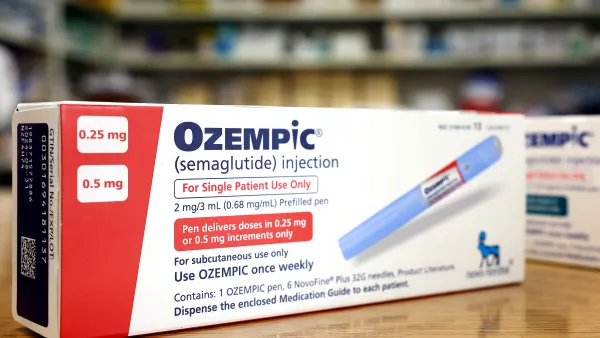In the complicated world of pharmaceutical development and manufacturing, it’s little wonder there are still a few mysteries. Potentially carcinogenic compounds called nitrosamines — and how they come to be in certain drugs — are one of those that top industry and regulatory experts are looking to solve.
Nitrosamines are organic compounds that may increase the risk of cancer, and they can be found in barbecued meat, drinking water, dairy products and other everyday goods. In the last few years, their presence in certain types of widespread medicines has led to several high-profile recalls.
Recall cases have risen in recent years, beginning in 2018 with heart medications containing the ingredient valsartan, which showed above-threshold levels of the nitrosamine NDMA. This led the industry to look at that drug class as a culprit, says Phil Koerner, the pharmaceutical market development manager of chromatography supply company Phenomenex.
“Initially, the thought was there’s something about the structure of these sartans, that they have a common backbone that could potentially be implicated into why these nitrosamines are starting to show up,” Koerner says.
But then other unrelated drug classes started showing raised levels of nitrosamines. Among these were batches of heart medications and smoking cessation treatments from Pfizer, pain relievers from Novartis, antacids from GlaxoSmithKline and the generic diabetes drug metformin.
Earlier this year, Pfizer found low levels of nitrosamines in the heart medication Accuretic, and a company spokesperson told PharmaVoice that in this case, there was no immediate danger to patients. Still, the level exceeded the threshold set by the FDA, and Pfizer was forced to voluntarily recall batches of the drug.
Experts say that several sources of the impurity are known, and in many cases, the initial discovery stems from the manufacturers. The challenge now is in pinpointing the specific cause each time and creating a system by which pharmaceutical companies can consistently meet purity requirements.
For pharma companies, the narrative of impurities — especially the cancer-causing kind — is one they’d rather avoid. And so, the industry is joining regulators in looking for an answer to the problem, even if the map is pointing in several directions at once.
A multi-pronged issue
Nitrosamines come about from a relatively simple chemical reaction that could happen at different points during the manufacturing of a drug, Koerner says.
“There are several different possible routes for nitrosamines to be introduced, but one of the important ways is just in the chemical synthesis of some of these compounds,” Koerner says. Specifically, a nitrating step in the process could produce nitrosamines, or a solvent can be reused from another process and carry nitrosamines with it. What’s clear is that it’s often related to the synthetic manufacturing process, Koerner says.
Finding at which point that can happen in each kind of drug is where the mystery becomes more obscure, says Ed Gump, vice president of the small molecules department at U.S. Pharmacopeia, also known as USP, an organization that establishes quality standards for medications.
“What everyone is looking for is, on the surface, ‘How do I know if the medicine I’m taking is likely to have a nitrosamine?’” Gump says. “I think the challenge is that it’s not like you can just point to one single ingredient and say, oh, that’s always the culprit — it’s a challenge because of the way the nitrosamine chemistry occurs.”
Part of why the nitrosamine problem has seemingly grown in recent years is that testing has become more sensitive, finding smaller amounts of the impurities.
“These types of chemical building blocks are ubiquitous in nature — you can find them everywhere,” Gump says. “What’s tricky about nitrosamines is, because they’re such potent carcinogens potentially, we have to worry about them at really, really, really low levels.”
Some of the earlier work on nitrosamines goes back to the 1970s, when they were discovered to potentially have a harmful effect. The problem has persisted mostly because nitrosamines are formed through side reactions and have passed by unseen in many cases, Gump says.
“When companies are working on developing their processes, they’re often thinking about the structures of the molecule they’re creating and not thinking so much about what some of the side reactions could be,” Gump said. “It’s become a blind spot over time.”
The long-marketed antacid ranitidine — one brand of which is Zantac from GlaxoSmithKline — was determined to break down and degrade in the presence of heat to produce NDMA, which is a type of nitrosamine. But 20 years ago, the testing techniques weren’t yet advanced or sensitive enough to detect those compounds at the parts-per-billion level, Koerner said. Now, those tests are available.
“I think what’s happened is that once there was some visibility and then you start doing some digging to try to figure out what types of drugs are affected, then there’s more visibility for the regulators,” Koerner says. “The regulatory agencies are asking pharma companies to be a little bit more diligent and do the risk assessment and some of the testing and then, if they find something, they’re acting.”
Finding the right levels
For pharma companies investigating where these nitrosamines are coming from, a risk assessment is essential to finding routes of introduction all the way down to the chemical level.
“All the pharma companies have been asked to go back and reassess all of their drug products and drug substances to look at the synthetic route of formulation based on the implication of certain chemical compounds or solvents,” Koerner says.
If that risk assessment shows a company’s processes are unlikely to lead to nitrosamine production, they generally don’t have to jump through as many hoops. After all, adding new testing to a manufacturing process — particularly to find extremely low levels of accidental compounds — can be pricey.
And then there’s the question of just how likely it is nitrosamines will cause cancer. The compounds have not been proven to be carcinogenic, but regulators are looking at that likelihood with caution, says Naiffer Romero, who leads scientific engagement for nitrosamine impurities at the USP.
“What regulators have done, since we don’t have data that prove whether or not these are carcinogenic, is say ‘let’s assume they are and take the more conservative approach,’” Romero says. “They’re trying to really be proactive so that nothing potentially bad slips through the supply chain.”
Similarly, any level of impurity should be mitigated in pharmaceutical products, Koerner says.
“It’s a genotoxic impurity and it’s not supposed to be there — it’s like finding benzene in sunscreen or in bottled water, and even at very, very low levels, it’s not supposed to be there,” Koerner says. “That elevates the level of concern and the desire to actually make sure that it’s not present.”
Long-term animal studies conducted by toxicologists are required to determine the danger posed by the presence of nitrosamines, Koerner says.
“Without a long-term study to say that it’s not going to cause cancer or it’s not going to cause cancer in the next 20 years, I don’t think you can draw that line in the sand or come to that firm conclusion,” Koerner says.
Controlling the process
Unfortunately, there is yet to be a standard test for whether a process will result in nitrosamine production, and therefore many of the solutions need to be addressed on a case-by-case basis. USP began to publish a new chapter on different types of nitrosamines and appropriate control methods at the end of 2021, but a monolithic standard is still difficult to achieve.
“I would say that probably every pharma company who has to test for nitrosamines would love to have a standard method that has been developed and validated for their specific [pharmaceutical ingredients] or their specific drug products,” Koerner says. “But the barrier to having a standardized test is that not all drugs are the same, and so there’s a decent starting point, but the reality is that coming up with a single solution is really challenging.”
The FDA and the EMA require companies to do their due diligence with a risk assessment, and if there is the possibility that nitrosamines could be produced as a potential low-level impurity in the process of making a drug, then they have to develop a control strategy.
Companies registering new drugs are required to have a risk assessment for the presence of mutagenic impurities in general, and Gump says that it’s much less likely these days for new products to potentially have nitrosamines accidentally crop up in their processes.
“The chance that something gets missed in one of these products is probably much lower than for products that were on the market from before the story broke and companies, manufacturers and regulators were really looking for this,” Gump says.
Even though recalls are the bane of a pharmaceutical company, these discoveries lead to further knowledge and better systems for combating impurities that could be harmful to patients, Gump says.
“Just like science, we gradually build on our knowledge, with quality as a kind of science in and of itself — and as we learn the things that can go wrong and cause quality problems and impact safety, that becomes the foundation for the next layer of quality science.”
And for those pharmaceutical companies themselves, the nitrosamine recall saga should be a reminder that every process is important in the drug-making business, Romero says.
“I think this was a wakeup call for organizations to really understand their processes — every single detail and not just what’s under their direct control,” Romero says. “You need to have a true understanding of every single component and the side reactions that can happen.”
Correction: This article previously misstated that Phil Koerner is the CEO of Phenomenex. He is the pharmaceutical market development manager.





















